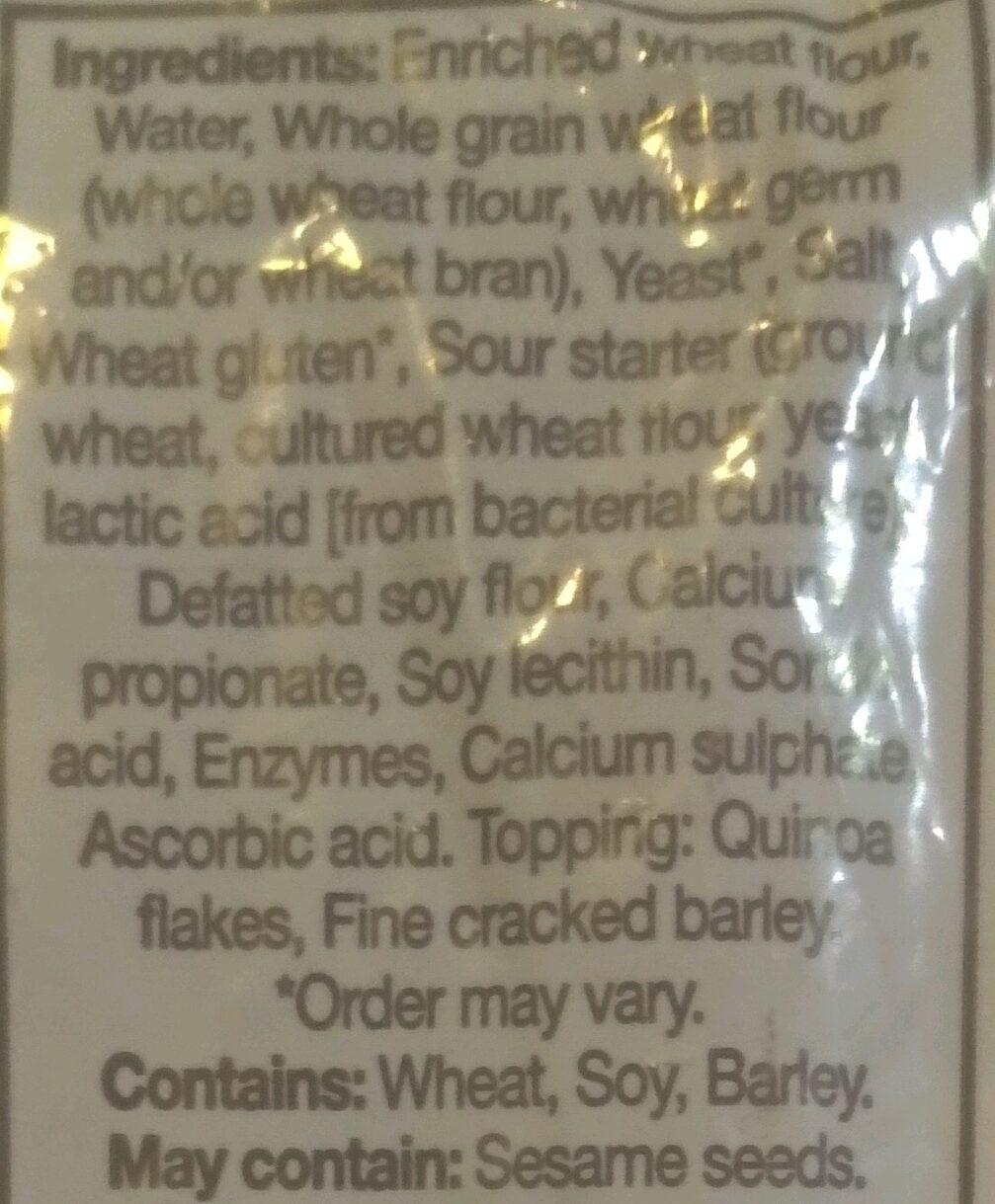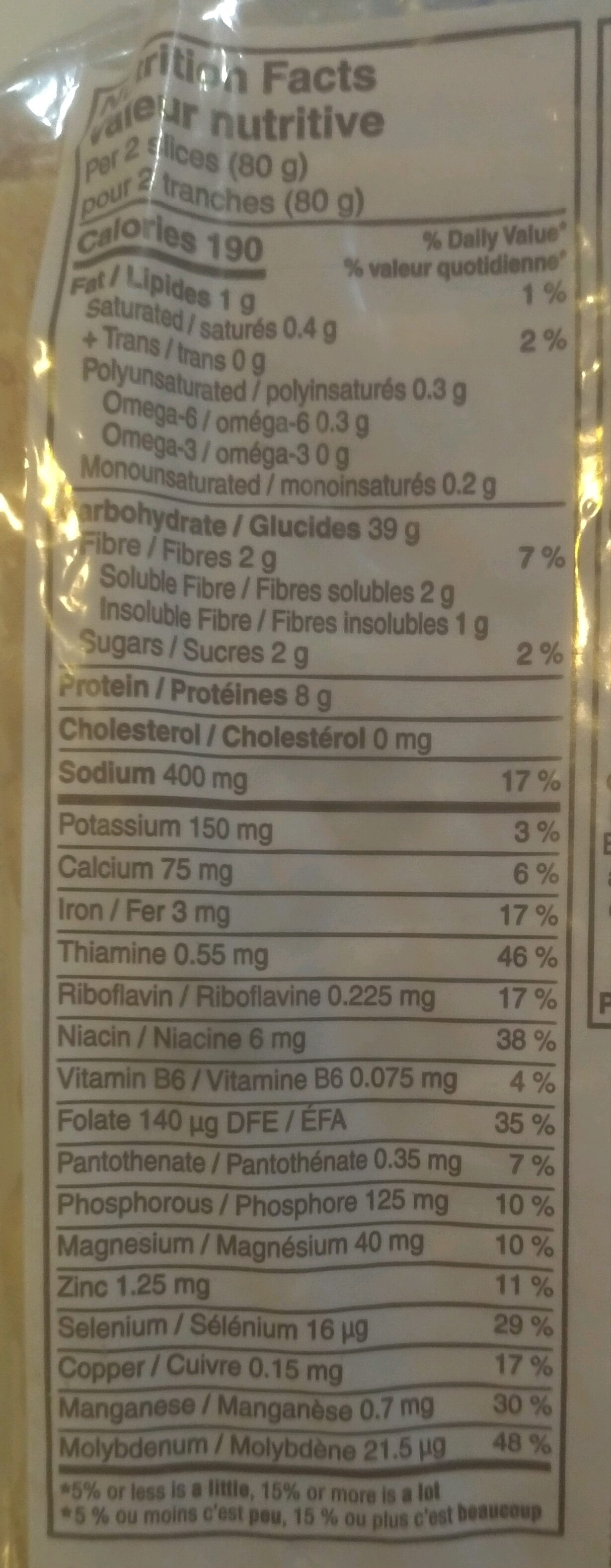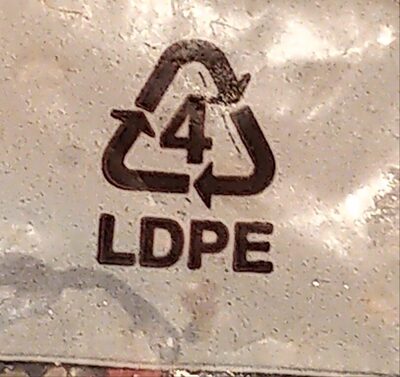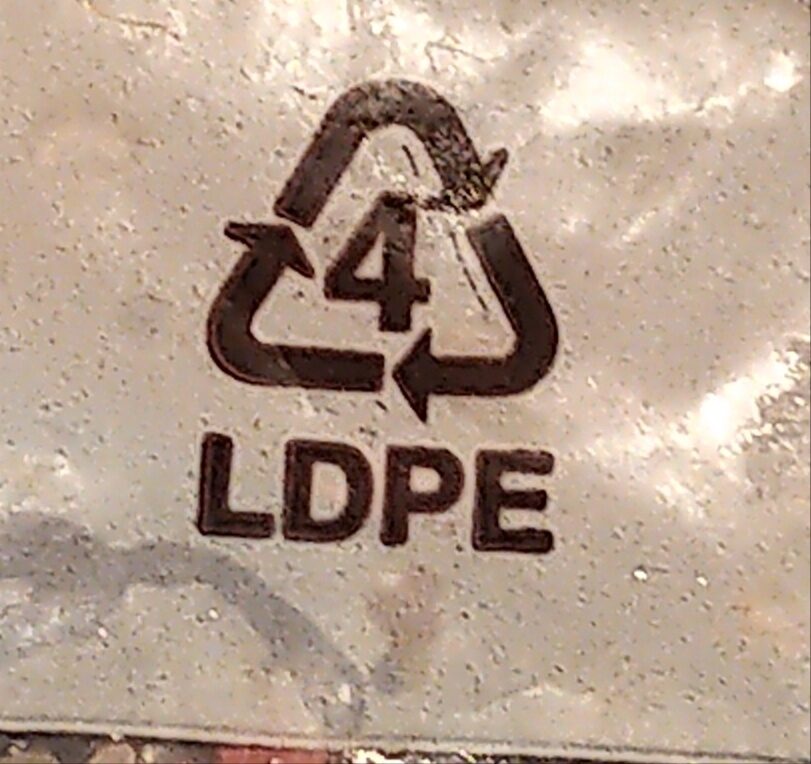Help us make food transparency the norm!
As a non-profit organization, we depend on your donations to continue informing consumers around the world about what they eat.
The food revolution starts with you!
No Sugar Added White Bread with Whole Grains - Country Harvest - 600 g
No Sugar Added White Bread with Whole Grains - Country Harvest - 600 g
This product page is not complete. You can help to complete it by editing it and adding more data from the photos we have, or by taking more photos using the app for Android or iPhone/iPad. Thank you!
×
Barcode: 0063400138926 (EAN / EAN-13) 063400138926 (UPC / UPC-A)
Quantity: 600 g
Brands: Country Harvest
Categories: Plant-based foods and beverages, Plant-based foods, Cereals and potatoes, Breads, Sliced breads
Labels, certifications, awards: No artificial flavors, Source of fibre, No added sugar, No artificial colors, No high fructose corn syrup
Origin of ingredients: Canada
Manufacturing or processing places: Canada
Link to the product page on the official site of the producer: https://countryharvest.com/products/nsa-...
Stores: Real Canadian Superstore
Countries where sold: Canada, United States
Matching with your preferences
Health
Ingredients
-
24 ingredients
Enriched wheat flour, Water, Whole grain wheat flour (whole wheat flour, wheat germ and/or wheat bran), Yeast, Salt, Wheat gluten, Sour starter (ground wheat, cultured wheat flour, yeast, lactic acid), Defatted soy flour, Calcium propionate, Soy lecithin, Sorbic acid, Enzymes, Calcium sulphate, Ascorbic acid, Topping (quinoa flakes, fine cracked barley)Allergens: Gluten, SoybeansTraces: Sesame seeds
Food processing
-
Ultra processed foods
Elements that indicate the product is in the 4 - Ultra processed food and drink products group:
- Additive: E322 - Lecithins
- Ingredient: Gluten
Food products are classified into 4 groups according to their degree of processing:
- Unprocessed or minimally processed foods
- Processed culinary ingredients
- Processed foods
- Ultra processed foods
The determination of the group is based on the category of the product and on the ingredients it contains.
Additives
-
E200 - Sorbic acid
Sorbic acid: Sorbic acid, or 2‚4-hexadienoic acid, is a natural organic compound used as a food preservative. It has the chemical formula CH3-CH-4CO2H. It is a colourless solid that is slightly soluble in water and sublimes readily. It was first isolated from the unripe berries of the Sorbus aucuparia -rowan tree-, hence its name.Source: Wikipedia
-
E270 - Lactic acid
Lactic acid: Lactic acid is an organic compound with the formula CH3CH-OH-COOH. In its solid state, it is white and water-soluble. In its liquid state, it is colorless. It is produced both naturally and synthetically. With a hydroxyl group adjacent to the carboxyl group, lactic acid is classified as an alpha-hydroxy acid -AHA-. In the form of its conjugate base called lactate, it plays a role in several biochemical processes. In solution, it can ionize a proton from the carboxyl group, producing the lactate ion CH3CH-OH-CO−2. Compared to acetic acid, its pKa is 1 unit less, meaning lactic acid deprotonates ten times more easily than acetic acid does. This higher acidity is the consequence of the intramolecular hydrogen bonding between the α-hydroxyl and the carboxylate group. Lactic acid is chiral, consisting of two optical isomers. One is known as L--+--lactic acid or -S--lactic acid and the other, its mirror image, is D--−--lactic acid or -R--lactic acid. A mixture of the two in equal amounts is called DL-lactic acid, or racemic lactic acid. Lactic acid is hygroscopic. DL-lactic acid is miscible with water and with ethanol above its melting point which is around 17 or 18 °C. D-lactic acid and L-lactic acid have a higher melting point. In animals, L-lactate is constantly produced from pyruvate via the enzyme lactate dehydrogenase -LDH- in a process of fermentation during normal metabolism and exercise. It does not increase in concentration until the rate of lactate production exceeds the rate of lactate removal, which is governed by a number of factors, including monocarboxylate transporters, concentration and isoform of LDH, and oxidative capacity of tissues. The concentration of blood lactate is usually 1–2 mM at rest, but can rise to over 20 mM during intense exertion and as high as 25 mM afterward. In addition to other biological roles, L-lactic acid is the primary endogenous agonist of hydroxycarboxylic acid receptor 1 -HCA1-, which is a Gi/o-coupled G protein-coupled receptor -GPCR-.In industry, lactic acid fermentation is performed by lactic acid bacteria, which convert simple carbohydrates such as glucose, sucrose, or galactose to lactic acid. These bacteria can also grow in the mouth; the acid they produce is responsible for the tooth decay known as caries. In medicine, lactate is one of the main components of lactated Ringer's solution and Hartmann's solution. These intravenous fluids consist of sodium and potassium cations along with lactate and chloride anions in solution with distilled water, generally in concentrations isotonic with human blood. It is most commonly used for fluid resuscitation after blood loss due to trauma, surgery, or burns.Source: Wikipedia
-
E282 - Calcium propionate
Calcium propanoate: Calcium propanoate or calcium propionate has the formula Ca-C2H5COO-2. It is the calcium salt of propanoic acid.Source: Wikipedia
-
E322 - Lecithins
Lecithins are natural compounds commonly used in the food industry as emulsifiers and stabilizers.
Extracted from sources like soybeans and eggs, lecithins consist of phospholipids that enhance the mixing of oil and water, ensuring smooth textures in various products like chocolates, dressings, and baked goods.
They do not present any known health risks.
-
E322i - Lecithin
Lecithins are natural compounds commonly used in the food industry as emulsifiers and stabilizers.
Extracted from sources like soybeans and eggs, lecithins consist of phospholipids that enhance the mixing of oil and water, ensuring smooth textures in various products like chocolates, dressings, and baked goods.
They do not present any known health risks.
Ingredients analysis
-
Palm oil free
No ingredients containing palm oil detected
Unrecognized ingredients: Sour-starter, Cultured-wheat-flour, Topping, Fine-cracked-barleySome ingredients could not be recognized.
We need your help!
You can help us recognize more ingredients and better analyze the list of ingredients for this product and others:
- Edit this product page to correct spelling mistakes in the ingredients list, and/or to remove ingredients in other languages and sentences that are not related to the ingredients.
- Add new entries, synonyms or translations to our multilingual lists of ingredients, ingredient processing methods, and labels.
If you would like to help, join the #ingredients channel on our Slack discussion space and/or learn about ingredients analysis on our wiki. Thank you!
-
Vegan status unknown
Unrecognized ingredients: Sour-starter, Cultured-wheat-flour, Topping, Fine-cracked-barleySome ingredients could not be recognized.
We need your help!
You can help us recognize more ingredients and better analyze the list of ingredients for this product and others:
- Edit this product page to correct spelling mistakes in the ingredients list, and/or to remove ingredients in other languages and sentences that are not related to the ingredients.
- Add new entries, synonyms or translations to our multilingual lists of ingredients, ingredient processing methods, and labels.
If you would like to help, join the #ingredients channel on our Slack discussion space and/or learn about ingredients analysis on our wiki. Thank you!
-
Vegetarian status unknown
Unrecognized ingredients: Sour-starter, Cultured-wheat-flour, Topping, Fine-cracked-barleySome ingredients could not be recognized.
We need your help!
You can help us recognize more ingredients and better analyze the list of ingredients for this product and others:
- Edit this product page to correct spelling mistakes in the ingredients list, and/or to remove ingredients in other languages and sentences that are not related to the ingredients.
- Add new entries, synonyms or translations to our multilingual lists of ingredients, ingredient processing methods, and labels.
If you would like to help, join the #ingredients channel on our Slack discussion space and/or learn about ingredients analysis on our wiki. Thank you!
-
Details of the analysis of the ingredients
We need your help!
Some ingredients could not be recognized.
We need your help!
You can help us recognize more ingredients and better analyze the list of ingredients for this product and others:
- Edit this product page to correct spelling mistakes in the ingredients list, and/or to remove ingredients in other languages and sentences that are not related to the ingredients.
- Add new entries, synonyms or translations to our multilingual lists of ingredients, ingredient processing methods, and labels.
If you would like to help, join the #ingredients channel on our Slack discussion space and/or learn about ingredients analysis on our wiki. Thank you!
en: Enriched wheat flour, Water, Whole grain wheat flour (whole wheat flour, wheat germ, wheat bran), Yeast, Salt, Wheat gluten, Sour starter (wheat, cultured wheat flour, yeast, lactic acid), soy flour, Calcium propionate, Soy lecithin, Sorbic acid, Enzymes, Calcium sulphate, Ascorbic acid, Topping (quinoa, fine cracked barley)- Enriched wheat flour -> en:fortified-wheat-flour - vegan: yes - vegetarian: yes - ciqual_proxy_food_code: 9410 - percent_min: 6.66666666666667 - percent_max: 100
- Water -> en:water - vegan: yes - vegetarian: yes - ciqual_food_code: 18066 - percent_min: 0 - percent_max: 50
- Whole grain wheat flour -> en:whole-wheat-flour - vegan: yes - vegetarian: yes - ciqual_proxy_food_code: 9410 - percent_min: 0 - percent_max: 33.3333333333333
- whole wheat flour -> en:whole-wheat-flour - vegan: yes - vegetarian: yes - ciqual_proxy_food_code: 9410 - percent_min: 0 - percent_max: 33.3333333333333
- wheat germ -> en:wheat-germ - vegan: yes - vegetarian: yes - ciqual_food_code: 9660 - percent_min: 0 - percent_max: 16.6666666666667
- wheat bran -> en:wheat-bran - vegan: yes - vegetarian: yes - ciqual_food_code: 9621 - percent_min: 0 - percent_max: 11.1111111111111
- Yeast -> en:yeast - vegan: yes - vegetarian: yes - percent_min: 0 - percent_max: 25
- Salt -> en:salt - vegan: yes - vegetarian: yes - ciqual_food_code: 11058 - percent_min: 0 - percent_max: 1.25
- Wheat gluten -> en:wheat-gluten - vegan: yes - vegetarian: yes - percent_min: 0 - percent_max: 1.25
- Sour starter -> en:sour-starter - percent_min: 0 - percent_max: 1.25
- wheat -> en:wheat - vegan: yes - vegetarian: yes - ciqual_proxy_food_code: 9410 - percent_min: 0 - percent_max: 1.25
- cultured wheat flour -> en:cultured-wheat-flour - percent_min: 0 - percent_max: 0.625
- yeast -> en:yeast - vegan: yes - vegetarian: yes - percent_min: 0 - percent_max: 0.416666666666667
- lactic acid -> en:e270 - vegan: yes - vegetarian: yes - percent_min: 0 - percent_max: 0.3125
- soy flour -> en:soya-flour - vegan: yes - vegetarian: yes - ciqual_food_code: 20900 - percent_min: 0 - percent_max: 1.25
- Calcium propionate -> en:e282 - vegan: yes - vegetarian: yes - percent_min: 0 - percent_max: 1.25
- Soy lecithin -> en:soya-lecithin - vegan: yes - vegetarian: yes - ciqual_food_code: 42200 - percent_min: 0 - percent_max: 1.25
- Sorbic acid -> en:e200 - vegan: yes - vegetarian: yes - percent_min: 0 - percent_max: 1.25
- Enzymes -> en:enzyme - vegan: maybe - vegetarian: maybe - percent_min: 0 - percent_max: 1.25
- Calcium sulphate -> en:e516 - vegan: yes - vegetarian: yes - percent_min: 0 - percent_max: 1.25
- Ascorbic acid -> en:e300 - vegan: yes - vegetarian: yes - percent_min: 0 - percent_max: 1.25
- Topping -> en:topping - percent_min: 0 - percent_max: 1.25
- quinoa -> en:quinoa - vegan: yes - vegetarian: yes - ciqual_food_code: 9340 - percent_min: 0 - percent_max: 1.25
- fine cracked barley -> en:fine-cracked-barley - percent_min: 0 - percent_max: 0.625
Nutrition
-
Good nutritional quality
⚠ ️Warning: the amount of fruits, vegetables and nuts is not specified on the label, it was estimated from the list of ingredients: 0This product is not considered a beverage for the calculation of the Nutri-Score.
Positive points: 7
- Proteins: 5 / 5 (value: 10, rounded value: 10)
- Fiber: 2 / 5 (value: 2.5, rounded value: 2.5)
- Fruits, vegetables, nuts, and colza/walnut/olive oils: 0 / 5 (value: 0, rounded value: 0)
Negative points: 7
- Energy: 2 / 10 (value: 994, rounded value: 994)
- Sugars: 0 / 10 (value: 2.5, rounded value: 2.5)
- Saturated fat: 0 / 10 (value: 0.5, rounded value: 0.5)
- Sodium: 5 / 10 (value: 500, rounded value: 500)
The points for proteins are counted because the negative points are less than 11.
Nutritional score: (7 - 7)
Nutri-Score:
-
Nutrient levels
-
Fat in low quantity (1.25%)
What you need to know- A high consumption of fat, especially saturated fats, can raise cholesterol, which increases the risk of heart diseases.
Recommendation: Limit the consumption of fat and saturated fat- Choose products with lower fat and saturated fat content.
-
Saturated fat in low quantity (0.5%)
What you need to know- A high consumption of fat, especially saturated fats, can raise cholesterol, which increases the risk of heart diseases.
Recommendation: Limit the consumption of fat and saturated fat- Choose products with lower fat and saturated fat content.
-
Sugars in low quantity (2.5%)
What you need to know- A high consumption of sugar can cause weight gain and tooth decay. It also augments the risk of type 2 diabetes and cardio-vascular diseases.
Recommendation: Limit the consumption of sugar and sugary drinks- Sugary drinks (such as sodas, fruit beverages, and fruit juices and nectars) should be limited as much as possible (no more than 1 glass a day).
- Choose products with lower sugar content and reduce the consumption of products with added sugars.
-
Salt in moderate quantity (1.25%)
What you need to know- A high consumption of salt (or sodium) can cause raised blood pressure, which can increase the risk of heart disease and stroke.
- Many people who have high blood pressure do not know it, as there are often no symptoms.
- Most people consume too much salt (on average 9 to 12 grams per day), around twice the recommended maximum level of intake.
Recommendation: Limit the consumption of salt and salted food- Reduce the quantity of salt used when cooking, and don't salt again at the table.
- Limit the consumption of salty snacks and choose products with lower salt content.
-
-
Nutrition facts
Nutrition facts As sold
for 100 g / 100 mlAs sold
per serving (80 g)Compared to: Sliced breads Energy 994 kj
(238 kcal)795 kj
(190 kcal)-5% Fat 1.25 g 1 g -63% Saturated fat 0.5 g 0.4 g +199% Monounsaturated fat 0.25 g 0.2 g +324% Polyunsaturated fat 0.375 g 0.3 g -58% Omega 3 fat 0 mg 0 mg Omega 6 fat 375 mg 300 mg Trans fat 0 g 0 g Cholesterol 0 mg 0 mg Salt 1.25 g 1 g +14% Carbohydrates 48.8 g 39 g +5% Fiber 2.5 g 2 g -45% Soluble fiber 2.5 g 2 g Insoluble fiber 1.25 g 1 g Sugars 2.5 g 2 g -48% Proteins 10 g 8 g +4% Vitamin B1 (Thiamin) 0.687 mg 0.55 mg +157% Vitamin B2 (Riboflavin) 0.281 mg 0.225 mg +8% Vitamin B3/PP (Niacin) 7.5 mg 6 mg +106% Vitamin B6 (Pyridoxin) 0.094 mg 0.075 mg Folates (total folates) 175 µg 140 µg Vitamin B5 (Pantothenic acid) 0.437 mg 0.35 mg Calcium 93.8 mg 75 mg +27% Iron 3.75 mg 3 mg +39% Potassium 188 mg 150 mg +26% Phosphorus 156 mg 125 mg -6% Magnesium 50 mg 40 mg Zinc 1.56 mg 1.25 mg Copper 0.188 mg 0.15 mg Manganese 0.875 mg 0.7 mg Selenium 20 µg 16 µg Molybdenum 26.9 µg 21.5 µg Fruits‚ vegetables‚ nuts and rapeseed‚ walnut and olive oils (estimate from ingredients list analysis) 0 % 0 %
Environment
-
Eco-Score A - Very low environmental impact
The Eco-Score is an experimental score that summarizes the environmental impacts of food products.→ The Eco-Score was initially developped for France and it is being extended to other European countries. The Eco-Score formula is subject to change as it is regularly improved to make it more precise and better suited to each country.Life cycle analysis
-
Average impact of products of the same category: A (Score: 90/100)
Category: Sandwich loaf
Category: Sandwich loaf
- PEF environmental score: 0.19 (the lower the score, the lower the impact)
- including impact on climate change: 1.76 kg CO2 eq/kg of product
Stage Impact Agriculture
58.9 %Processing
23.6 %Packaging
12.2 %Transportation
4.8 %Distribution
0.4 %Consumption
0.0 %
Bonuses and maluses
-
Origins of ingredients with a medium impact
Bonus: +2
Environmental policy: +2
Transportation: 0
Origin of the product and/or its ingredients % of ingredients Impact Canada 100 %Medium
-
Packaging with a medium impact
Malus: -9
Shape Material Recycling Impact 1 Bag LDPE 4 - Low-density polyethylene Recycle with plastics High 1 Tie Plastic Discard High
Eco-Score for this product
-
Impact for this product: A (Score: 83/100)
Product: No Sugar Added White Bread with Whole Grains - Country Harvest - 600 g
Life cycle analysis score: 90
Sum of bonuses and maluses: -7
Final score: 83/100
-
Carbon footprint
-
Equal to driving 0.9 km in a petrol car
176 g CO² per 100g of product
The carbon emission figure comes from ADEME's Agribalyse database, for the category: Sandwich loaf (Source: ADEME Agribalyse Database)
Stage Impact Agriculture
59.3 %Processing
17.8 %Packaging
16.0 %Transportation
6.7 %Distribution
0.3 %Consumption
0.0 %
Packaging
-
Packaging with a medium impact
-
Packaging parts
1 x Tie (Plastic)
1 x Bag (LDPE 4 - Low-density polyethylene)
-
Packaging materials
Material % Packaging weight Packaging weight per 100 g of product Plastic
-
Transportation
-
Origins of ingredients
Origins of ingredients with a medium impact
Origin of the product and/or its ingredients % of ingredients Impact Canada 100 %Medium
Report a problem
-
Incomplete or incorrect information?
Category, labels, ingredients, allergens, nutritional information, photos etc.
If the information does not match the information on the packaging, please complete or correct it. Open Food Facts is a collaborative database, and every contribution is useful for all.
Data sources
Product added on by foodvisor
Last edit of product page on by magician.
Product page also edited by binzyboi, kiliweb, roboto-app, wolfgang8741, yuka.SEtvY0VKNWUvZDhYdjhFVjBrUFp5dFJ0N3JtSFVuNmJPdXhNSUE9PQ, yuka.sY2b0xO6T85zoF3NwEKvlkh6V8LBgmrjbQfRuGyJl9uqCaewZfd534nwb6s, yuka.sY2b0xO6T85zoF3NwEKvlmtdbNH4_yueDRPjsFyFlomcK5HTc_ws_KjUK6g, yuka.sY2b0xO6T85zoF3NwEKvlnJgDvTZuW34BRnmumaMzN6xKKL0SsxRzq78GKs.












